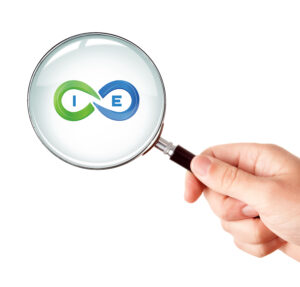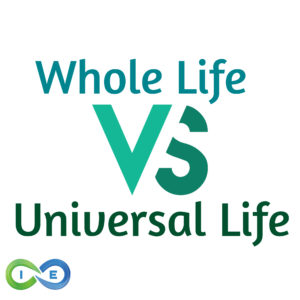Flexibility, control, tax advantages, and a safety net – all with one single asset
Although many people include permanent life insurance in their financial plan for the death benefit it can provide, there is a multitude of other ways these cash value life insurance policies may be used, too…even while the insured is still alive.
One of the most misunderstood – yet flexible – types of life insurance is dividend paying whole life insurance. While many of its opponents state that whole life insurance is “too expensive (compared to what?)” and “unnecessary” (especially for retirees), the reality is that this financial tool is like a Swiss army knife when it comes to the wide array of guarantees, growth opportunities, tax advantages, and wealth protection options this amazing asset can provide.
We will address some of these criticisms below, but know that it is critical that you have the right type of properly designed high cash value whole life insurance policy in force if you want to truly maximize all of these unique benefits. And also realize that many of the negatives you hear about whole life are talking about traditional whole life and not a whole life insurance policy structured for maximum cash value growth and accumulation.
Traditional Whole Life vs. High Cash Value Whole Life Insurance
Like many other insurance and financial products, not all whole life insurance policies are exactly the same. In fact, whole life policies may be vastly different from one another. This is the case with traditional versus high cash value whole life.
Traditional Whole Life
With a traditional whole life insurance policy, the cash value is contractually guaranteed to equal the amount of the death benefit either when the insured passes away or when he or she reaches age 120 – whichever occurs first. This is true, regardless of what happens in the stock market, with interest rates, or even in the economy overall.
Some of the benefits that are offered via traditional and high cash value whole life insurance policies include:
- Guaranteed death benefit (as soon as the very first premium is made)
- The policy will remain in force (provided that the premium is paid)
- Premiums will not increase (even as the insured ages)
- Tax deferred growth of the cash value (so gains are not taxed unless or until they are withdrawn)
- Principal and previous gains are protected in any type of market or economic environment
- Withdrawals are accessed “first in, first out” (FIFO), meaning that non-taxable principal is accessed first before taxable gains come out
- Funds from the cash value can be borrowed tax free
- Interest continues to accrue on the full amount of the cash value – even if there is a policy loan balance
Many traditional whole life insurance policies may also offer various “living benefits.” As the name implies, these are benefits that may be used when the insured is still alive. Some of these benefits may be included free of charge, while others can require an additional amount of premium to be paid.
Living benefits on a traditional and high cash value whole life insurance policy may include one or more of the following:
- Terminal Illness – If the insured is diagnosed with a terminal illness (typically with a life expectancy of less than two years, depending on the insurance company), funds may be accessed to help with paying for end-of-life care.
- Chronic Illness – Should the insured be diagnosed with a chronic illness that prevents them from performing at least two (out of six) daily living activities – such as bathing, transferring (from bed to a chair), continence, dressing, toileting, or eating – funds can be accessed from the policy.
- Critical Illness – A critical illness, such as a heart attack, kidney failure, or a stroke, could shorten one’s life expectancy and come with high healthcare costs. If the insured contracts a qualifying illness, funds may be accessed from the policy.
- Long-Term Care – Long-term care services can also be expensive. If a life insurance policy has long-term care living benefits, money may be accessed to pay for care in a facility or at home (provided that the insured qualifies, based on their health condition).
The money to fund living benefits comes from the policy’s death benefit proceeds. So, when the insured passes away, the remaining funds from the death benefit will be paid out to the beneficiary(ies).
High Cash Value Whole Life
A high cash value whole life insurance policy is still whole life and provides all the benefits listed above. The primary difference between it and a more traditionally designed policy is that this more modern whole life insurance focuses less on the death benefit and more on building up the cash value – and doing so as quickly as possible. So, while these policies do offer a death benefit, they are typically used for growing wealth on a tax-advantaged basis through the cash value component.
One beneficial way to use these policies is by making high-ticket purchases, such as funding your business or purchasing investment real estate. With a high cash value whole life insurance policy, the policyholder can practice a strategy called infinite banking, where he or she essentially takes on the role of both the borrower and the lender, and in turn, eliminate paying interest to a third party on large purchases – which can save a significant amount of money over time as you pay back your loan, rather than a traditional lender or bank.
In addition, due to the way growth takes place in the policy’s cash value account, many investors are able to continue growing their savings on a tax deferred (or tax free) basis – even if they have already “maxed out” the annual contributions to IRAs and employer-sponsored retirement plans.
Volatility Buffer
High cash value whole life insurance policies may also be used for supplementing retirement income via tax free loans, which provides a volatility buffer since it is a non-correlated asset that you can tap into when your other accounts are down because of a stock market correction.
Not all whole life insurance policies are built for maximizing the cash value, though. So, it is important that you work with a specialist who can guide you towards the proper policy and design.
THE ULTIMATE FREE DOWNLOAD
The Self Banking Blueprint
A Modern Approach To The Infinite Banking Concept

How to Design and Maximize High Cash Value Whole Life Insurance Benefits
Properly designing and maximizing a high cash value whole life insurance policy requires several key components that are all integrated and work together. These include a(n):
- Base policy
- Dividends
- Paid Up Additions
- Term rider
Base Policy
Having the right type of dividend paying whole life insurance policy in place is critical for maximizing the cash value component. You should be able to keep the death benefit low while also focusing on building up the growth of the cash.
It is important that the base policy comes from a mutual insurance company, as these insurers are also able to offer dividends (although payment of these is never guaranteed).
Many insurance companies offer limited pay life insurance, which are whole life policies that allow you to pay a larger premium for a shortened period of time (such as for 7 years or 10 years versus for the remainder of your lifetime). When it comes to growing the cash value, putting more premium into the policy sooner can help to enhance the cash build up more quickly. Once the premium period has ended, the policy is paid up and no more premiums are due.
However, the best high cash value whole life insurance policy for you may be different for someone else. There are different ways to structure the policy to maximize either short term or long term growth, or a balance of both.
Dividends
The receipt of life insurance dividends can make a significant difference in enhancing the performance of your policy’s cash value over time. In addition to being received tax free, dividends can also add to the tax-advantaged growth inside the policy’s cash value and as such, generate a return on the:
- Principal
- Previously earned interest
- Funds that would have otherwise been paid out in taxes
Guaranteed growth in the policy and the addition of life insurance dividends over a long term horizon can significantly grow your policy’s cash value. Add in the fact that your cash value growth is tax-deferred, and can be accessed tax-free, and you have the recipe for a true compound growth account.
Paid Up Additions
Using paid up additions is another way that you can maximize the cash value in a properly designed whole life insurance policy. Paid up additions, or PUAs, are increases in death benefit coverage that you may purchase using any dividends that are generated by a whole life insurance policy.
Because the new coverage will be paid for in full by the dividends, there is no increase in the policy’s premium payment. Plus, because one single premium pays up this additional new coverage, the cash value of a paid up addition can also accelerate much faster.
In fact, one of the key benefits of using paid up additions is the rapid acceleration of cash value growth because oftentimes, a significant portion of each PUA premium will go directly to the policy’s cash value component.
As an added bonus, there is no underwriting necessary when purchasing paid up additions. So, this can provide a way to increase death benefit coverage, even if an insured has contracted an adverse health condition and is no longer considered insurable. (It is important to note that you are limited to how much in paid up additions you can purchase in a given time period).
Although you may not want or need any additional life insurance coverage, paid up additions are important because the higher the amount of the death benefit is, the higher the cash value can climb to “meet” that target amount.
Term Riders
A term rider can be added to a whole life insurance policy. The term rider temporarily increases the policy’s death benefit for a pre-set period of time.
As an example, a base whole life policy may offer coverage of $1,000,000. A term rider could then be added that allows for an additional $1,000,000 to be paid out if the insured dies within the first ten years that the policy is in force.
A term rider is a key ingredient when structuring a high cash value whole life insurance policy so that your policy avoids becoming a modified endowment contract (MEC). A seasoned pro, like our team of Pro Client Guides, can help make sure your policy’s design is fully optimized for cash value growth while avoiding MEC status.
The added coverage a term rider offers can also help if your survivors will need a financial safety net – such as for income replacement and/or debt payoff – during the early years of the policy.
In addition, purchasing a term rider on a whole life insurance policy can often be less expensive than obtaining a separate term life insurance policy to be used for temporary death benefit protection.
The (Insurance) Company You Keep Matters
While choosing the right type of whole life insurance policy can make a big difference in how your overall plan performs, where you obtain the coverage is also a key factor – especially in terms of how fast the cash value in the policy builds up.
There are two types of insurance companies in the marketplace – stock and mutual insurance companies. In a stock insurance company, outside shareholders are essentially the co-owners of the firm. So, the company’s objective is to generate a profit for them.
Conversely, with a mutual insurance company, the policyholders are the firm’s co-owners, and as such, they may receive dividends. These dividends can be taken as cash or used to increase the cash value and/or the amount of the death benefit coverage.
Because dividends are considered a return of premium, they are not taxable to the recipient. So this, too, can help to enhance the growth of the policy’s cash value. Although dividends are not guaranteed, some mutual insurers have been consistently paying them out on an annual basis for over 150 years.
Dividends can play a key role in maximizing the growth of a high cash value whole life insurance policy. Therefore, policies from mutual insurance companies are generally recommended when implementing High Cash Value insurance strategies.
It is also important to check the financial strength and claims paying reputation of an insurance carrier you are considering purchasing a policy through. Insurers are typically rated by one or more of the ratings agencies, including:
- AM Best
- Standard & Poor’s
- Moody’s
- Fitch Ratings
Other Factors to Consider When Designing a High Cash Value Life Insurance Policy
In addition to the policy features and the type of insurer, there are some other factors to consider when designing a high cash value whole life plan. As mentioned briefly above, it is critical that a high cash value whole life insurance policy does not become a Modified Endowment Contract, or MEC.
A Modified Endowment Contract is a type of tax qualification for a life insurance policy where its cumulative premiums exceed the federal tax law limits. If this happens, the taxation structure, along with the policy’s classification, changes.
As an example, if a life insurance policy were to become a Modified Endowment Contract, the taxation of withdrawals from that policy would be similar to that of a non-qualified annuity. In this case, then, if the policyholder took withdrawals before he or she turns age 59 1/2, they would incur a 10% early withdrawal penalty from the IRS. (This penalty is in addition to any taxes that may be owed).
So, it is essential that you find the right balance between maximizing a life insurance policy’s cash value while at the same time ensuring that it does not become a Modified Endowment Contract, in turn, losing important tax-related benefits. Working with our Pro Client Team can help you to accomplish this.
MEC Criteria
In determining a policy’s Modified Endowment Contract status, there are three criteria that it must meet to ensure that it is not a MEC. These include the following:
- The policy was entered into on or after June 20th, 1988;
- The policy must meet the statutory definition of a life insurance policy; and,
- The policy must fail to meet the Technical Miscellaneous Revenue Act (TAMRA) 7-pay test.
The 7-pay test calculates whether or not the total amount premiums that are paid into a life insurance policy within the first seven years is more than what was required to have the policy considered as “paid up” in seven years. A policy becomes a Modified Endowment Contract when the premiums paid into it are more than what was actually needed to be paid within that 7-year timeframe.
There is another key tax-related difference between a regular life insurance policy and a MEC, too, and that is, unlike traditional life insurance policies, the taxes on gains are considered to be regular income for a MEC withdrawal under the last in, first out (LIFO) accounting methods. In this case, though, the cost basis within a MEC and withdrawals are not subject to taxation.
Is High Cash Value Whole Life Insurance Right for You?
While high cash value whole life insurance can offer many benefits, this financial tool may not be right for everyone. So, before you make a long term commitment to this – or any – type of life insurance strategy, be sure that you consider the following criteria:
- Future income needs
- Tax bracket and filing status
- Income replacement / coverage needs
- Risk tolerance
- Time frame
- Special situations (such as a special needs loved one)
- Legacy intentions
Because there are many components that are involved when designing a high cash value life insurance strategy, it is recommended that you work with a specialist in this area who can guide you through the process of choosing the best option for you.
That’s where Insurance and Estates can help.
At Insurance and Estates, we focus on helping our clients grow, protect, and manage their wealth and retirement income – and we put strategies in place that can keep your assets protected in any type of market or economic environment. So, contact us today and schedule a time to talk with a member of our Pro Client Team. You can also reach us by calling (877) 787-7558 or by leaving a question in the comment section below. We look forward to assisting you.
THE ULTIMATE FREE DOWNLOAD
The Self Banking Blueprint
A Modern Approach To The Infinite Banking Concept







